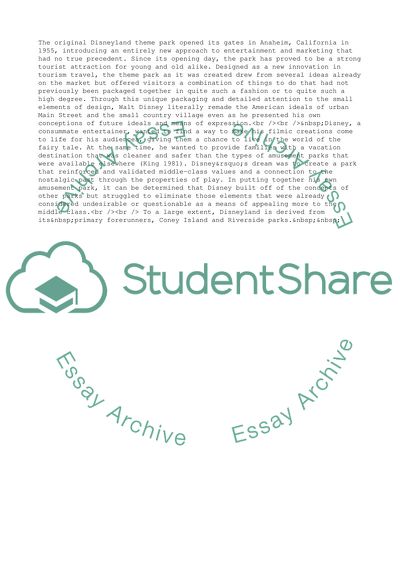Cite this document
(Walt Disney: The Ultimate Innovator Case Study Example | Topics and Well Written Essays - 2250 words, n.d.)
Walt Disney: The Ultimate Innovator Case Study Example | Topics and Well Written Essays - 2250 words. Retrieved from https://studentshare.org/business/1720036-using-an-example-of-your-choice-prepare-a-case-study-of-an-individual-innovatorshowing-how-the-initial-idea-emerged-and-analysing-how-this-eventually-became-an-innovation
Walt Disney: The Ultimate Innovator Case Study Example | Topics and Well Written Essays - 2250 words. Retrieved from https://studentshare.org/business/1720036-using-an-example-of-your-choice-prepare-a-case-study-of-an-individual-innovatorshowing-how-the-initial-idea-emerged-and-analysing-how-this-eventually-became-an-innovation
(Walt Disney: The Ultimate Innovator Case Study Example | Topics and Well Written Essays - 2250 Words)
Walt Disney: The Ultimate Innovator Case Study Example | Topics and Well Written Essays - 2250 Words. https://studentshare.org/business/1720036-using-an-example-of-your-choice-prepare-a-case-study-of-an-individual-innovatorshowing-how-the-initial-idea-emerged-and-analysing-how-this-eventually-became-an-innovation.
Walt Disney: The Ultimate Innovator Case Study Example | Topics and Well Written Essays - 2250 Words. https://studentshare.org/business/1720036-using-an-example-of-your-choice-prepare-a-case-study-of-an-individual-innovatorshowing-how-the-initial-idea-emerged-and-analysing-how-this-eventually-became-an-innovation.
“Walt Disney: The Ultimate Innovator Case Study Example | Topics and Well Written Essays - 2250 Words”. https://studentshare.org/business/1720036-using-an-example-of-your-choice-prepare-a-case-study-of-an-individual-innovatorshowing-how-the-initial-idea-emerged-and-analysing-how-this-eventually-became-an-innovation.


